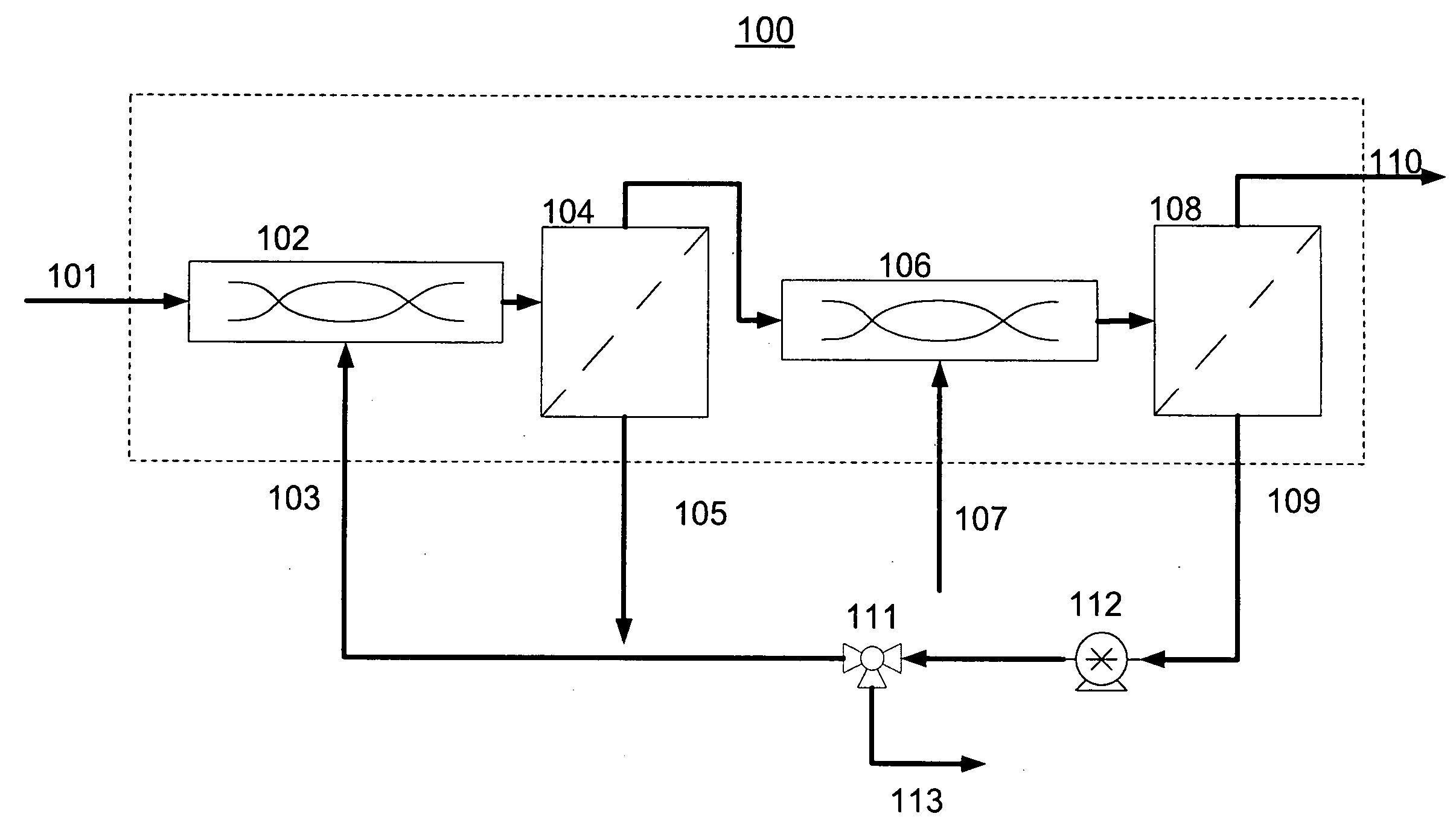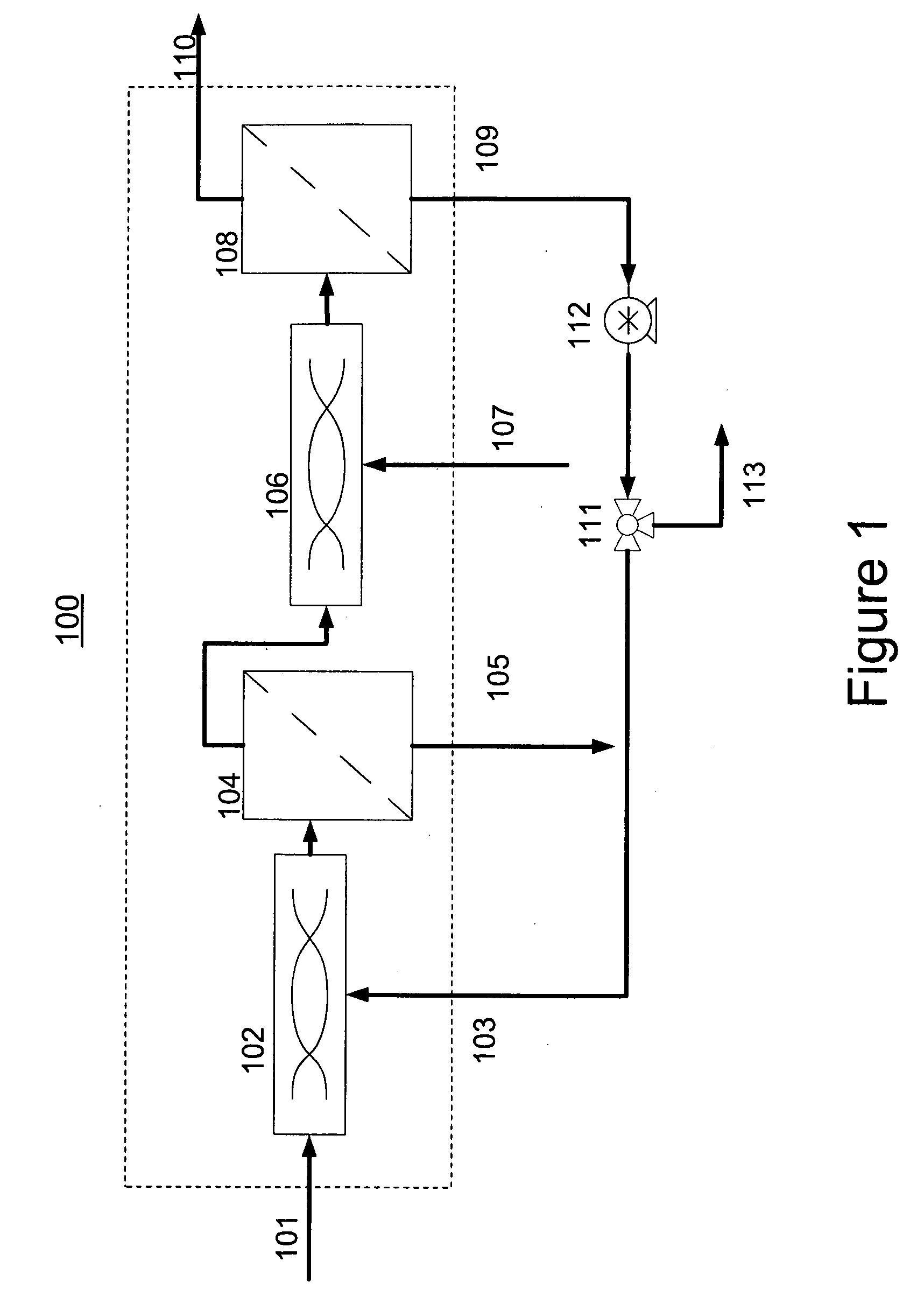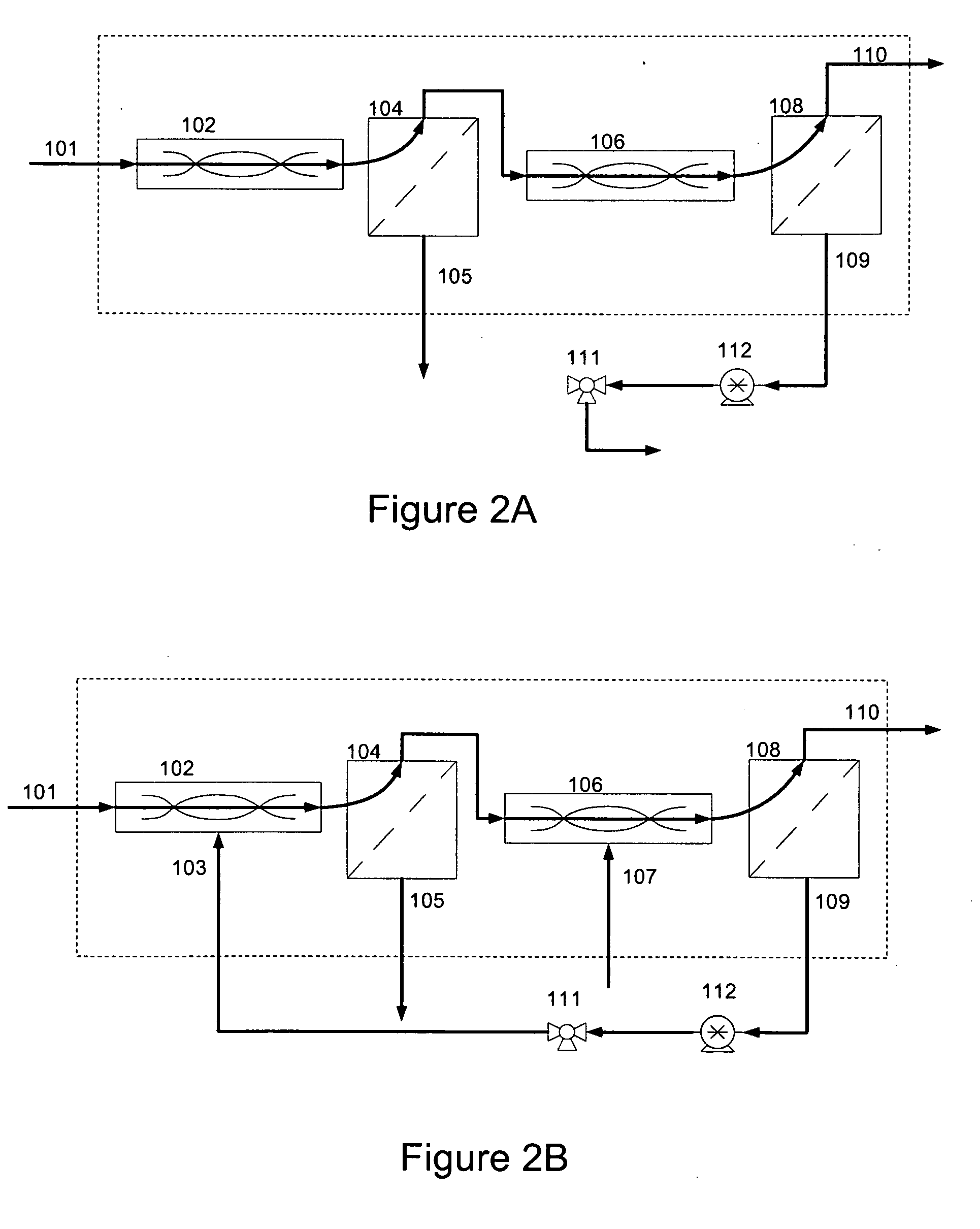Countercurrent tangential chromatography methods, systems, and apparatus
a tangential chromatography and countercurrent technology, applied in the field of chromatography, can solve the problems of inability to make significant improvements in the column chromatography process, and inability to achieve significant improvement. achieve the effect of increasing the efficiency of the system
- Summary
- Abstract
- Description
- Claims
- Application Information
AI Technical Summary
Benefits of technology
Problems solved by technology
Method used
Image
Examples
Embodiment Construction
[0035]Definitions: The following terms of art shall have the below ascribed meanings throughout this Specification.
[0036]Binding mode is a stage of operation during which resin and unpurified product form a reversible complex.
[0037]Washing mode is a stage of operation during which resin with bound product is washed with a washing buffer to rid the resin of impurities.
[0038]Elution mode is a stage of operation during which the complex of resin and the product is reversed and the purified product is collected.
[0039]Regeneration mode is a stage of operation during which the resin is cleaned for the purpose of reuse or for later cycles.
[0040]Equilibration mode is a stage of operation during which the system is equilibrated in a neutral buffer.
[0041]As stated in the Summary of the Invention section, in the present invention, the chromatography column is replaced by a module that consists of two or more interconnected tangential flow filters and static mixers. The chromatography resin flo...
PUM
 Login to View More
Login to View More Abstract
Description
Claims
Application Information
 Login to View More
Login to View More - R&D
- Intellectual Property
- Life Sciences
- Materials
- Tech Scout
- Unparalleled Data Quality
- Higher Quality Content
- 60% Fewer Hallucinations
Browse by: Latest US Patents, China's latest patents, Technical Efficacy Thesaurus, Application Domain, Technology Topic, Popular Technical Reports.
© 2025 PatSnap. All rights reserved.Legal|Privacy policy|Modern Slavery Act Transparency Statement|Sitemap|About US| Contact US: help@patsnap.com



